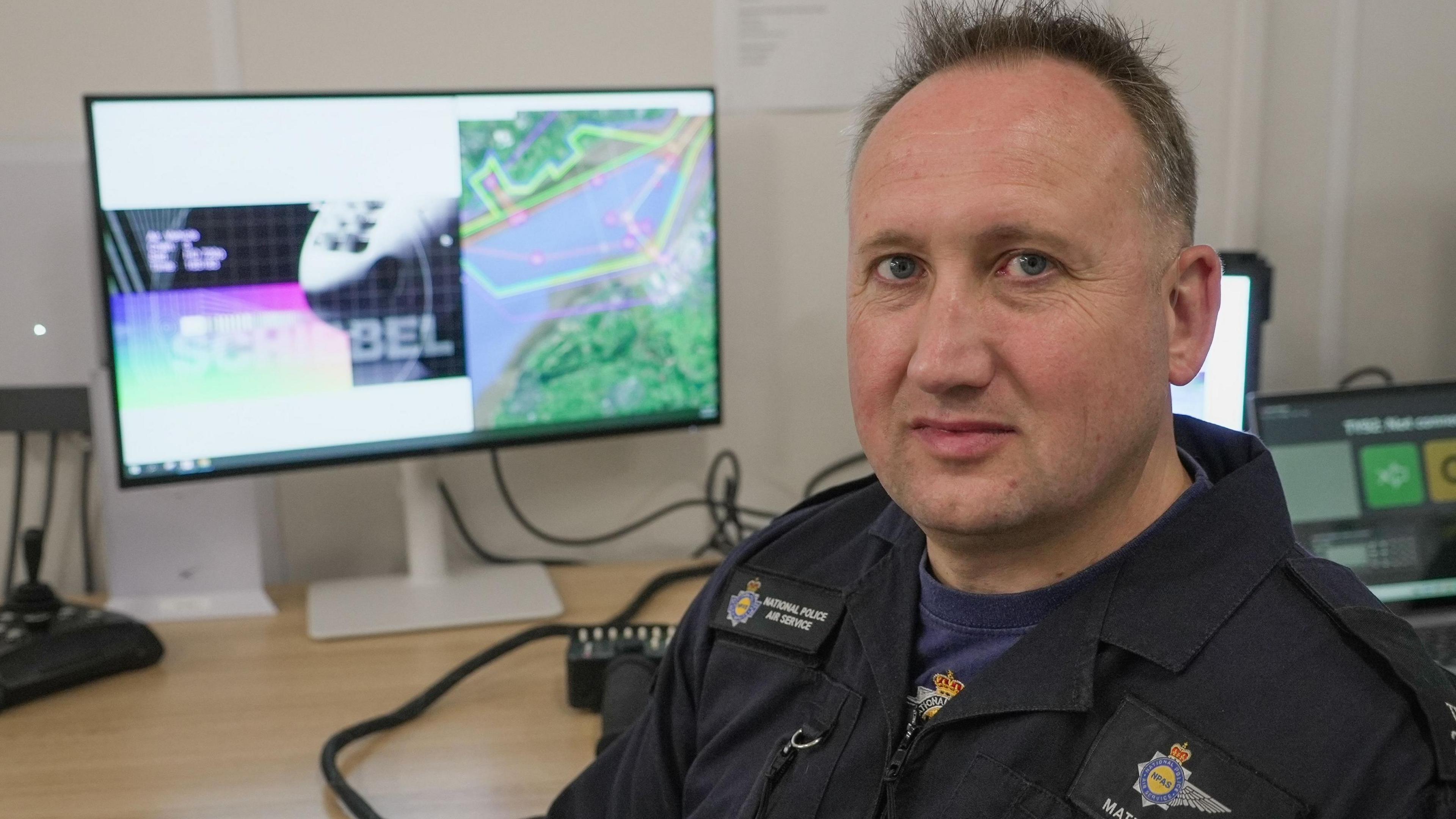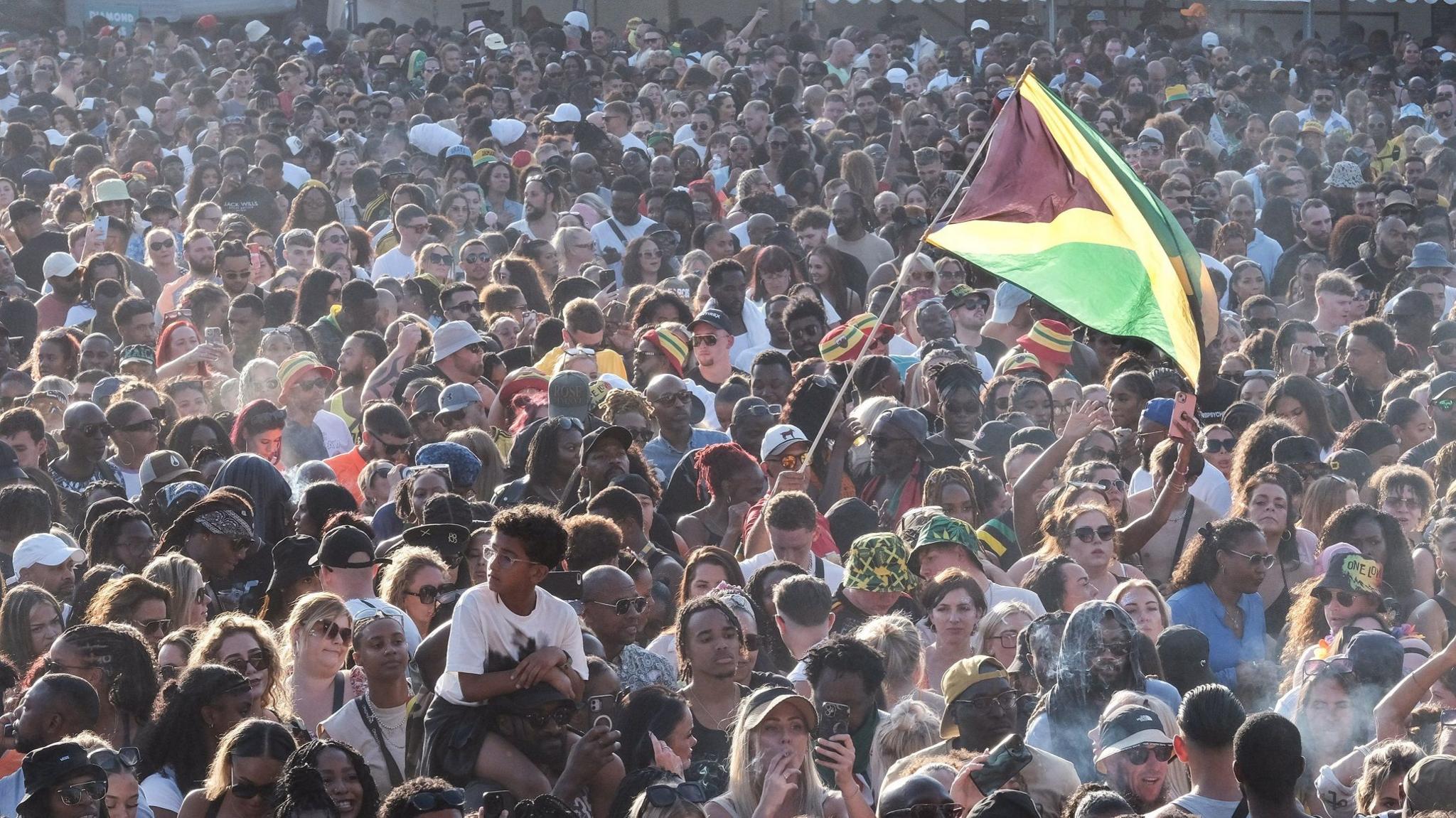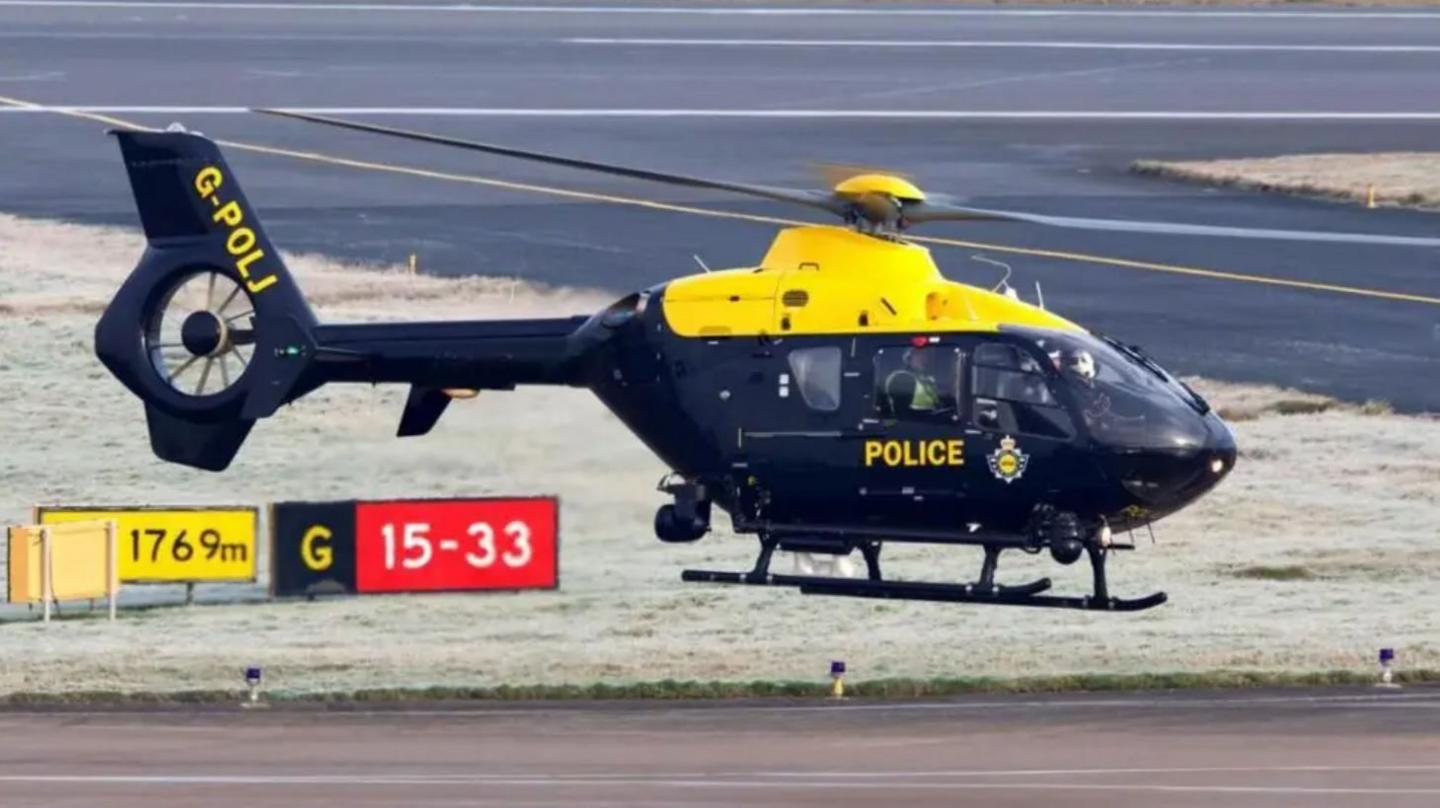First UK testing of unmanned police helicopter
The new drone can stay in the air for up to 12 hours
- Published
An unmanned police helicopter has been tested in the UK for the first time.
The remotely-piloted aircraft is larger than existing drones used by police forces and has a greater range and cuts emissions.
The National Police Air Service (NPAS) said it is not expected to replace existing helicopters, but is intended to join the fleet to carry out searches for suspects and missing people.
David Walters, NPAS head of futures and innovation, said it would help them stay airborne for longer, adding: "This capability in the future will be able to stay on task anywhere between eight and 12 hours."
The Schiebel Camcopter S-100 carries the same high-powered infrared camera as standard police helicopters but can fly for up to 12 hours.
It is expected to be quieter and lead to fewer noise complaints.
Night-time test flights are being conducted over the Bristol Channel, in a programme funded by the Home Office and overseen by the Civil Aviation Authority and National Air Traffic Services.
'Missing people searches'
Mr Walters said: "We see a blended fleet capability [in the future] where we have the mix of crewed and uncrewed aircraft."
He added the current aircraft available to officers - a mix of helicopter and fixed-wing - mean they can stay in the air for between two and six hours.
He said 30% of NPAS calls were to search for missing people, which the unmanned aircraft is particularly useful for.
"We get calls daily with a variety of different cases, from missing people, pursuits, calls around electric bikes and things like that and it's very costly to deploy our helicopters on an hourly basis," Mr Walters said.
"This [new helicopter] offers us an opportunity to deploy the same type of capability to provide more affordable air support whilst also still retaining our crewed aircraft for the likes of higher-speed pursuits, which those aircraft are designed for."
He said the drone offered a 90% reduction in emissions per hour, compared to crewed aircraft.

PC Matt Leeding said the drones are helping police "embrace new technology"
The new aircraft, or Unmanned Aerial System (UAS), is flown by a pilot at a ground station, supported by a police officer operating its camera.
PC Matt Leeding, an NPAS Tactical Flight Officer, told BBC News he had access to the same tools as an officer in the air
"My job doesn't change, all we're doing is embracing the new technology, the same service, using the same equipment just on a slightly different platform," he said.
"There are still incidents when I'll be sitting in an aircraft at 1,500 feet (457 metres) for certain specialist operations and tasks that require a crew on the scene."
The unmanned aircraft has a forward-facing camera the pilot can monitor and uses radar to detect and avoid other aircraft.
Test flights are part of programme of experimental drone trials, which include Amazon deliveries and infrastructure inspections.
Sophie O'Sullivan, from the Civil Aviation Authority, told BBC News the research would lead to more unmanned aircraft in our skies.
"We're also working with healthcare providers to see what we can do.
"We're working with companies like Network Rail to look at opportunities around infrastructure surveillance," she added.
Remotely-piloted drones are already in use with HM Coastguard and the Royal Navy, performing search and reconnaissance roles, but the unmanned police helicopter will be the first flying over residential areas.
Test flights are due to take place until October, but it is expected years of testing will be needed before unmanned aircraft join the NPAS fleet.
Get in touch
Tell us which stories we should cover in Bristol
Follow BBC Bristol on Facebook, external, X, external and Instagram, external. Send your story ideas to us on email or via WhatsApp on 0800 313 4630.
Related topics
- Published1 August

- Published28 June

- Published22 November 2023
